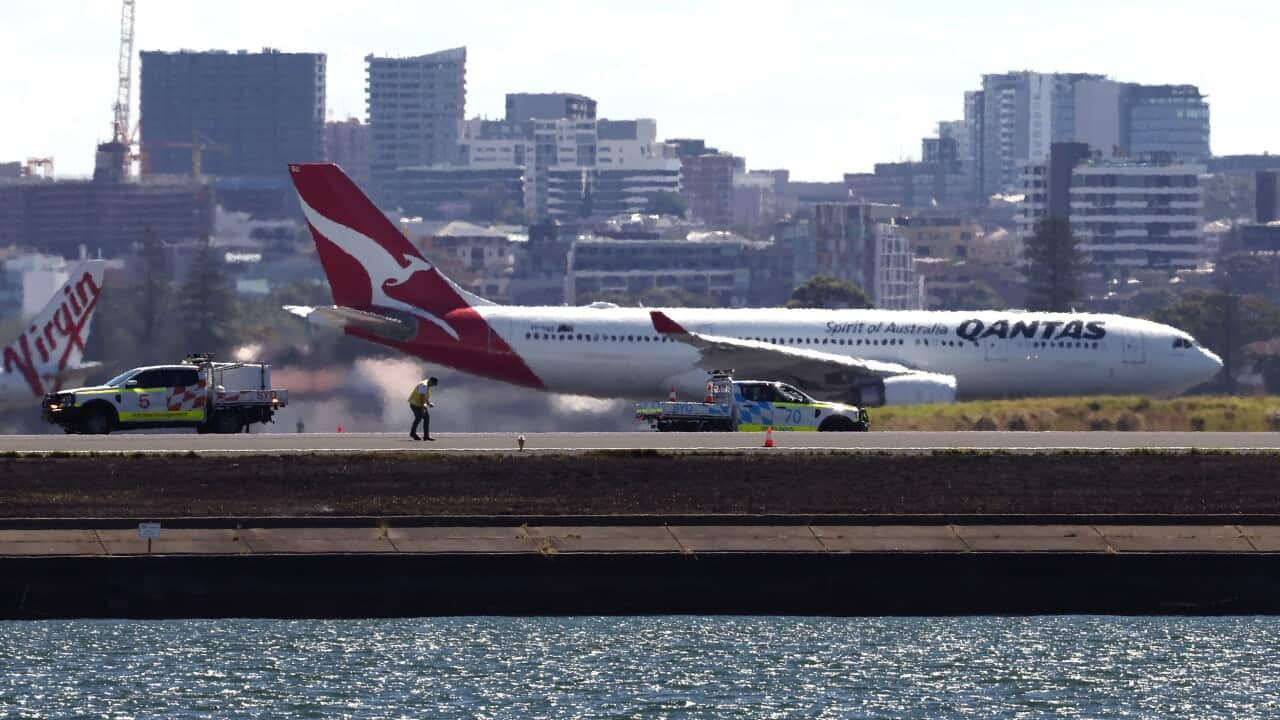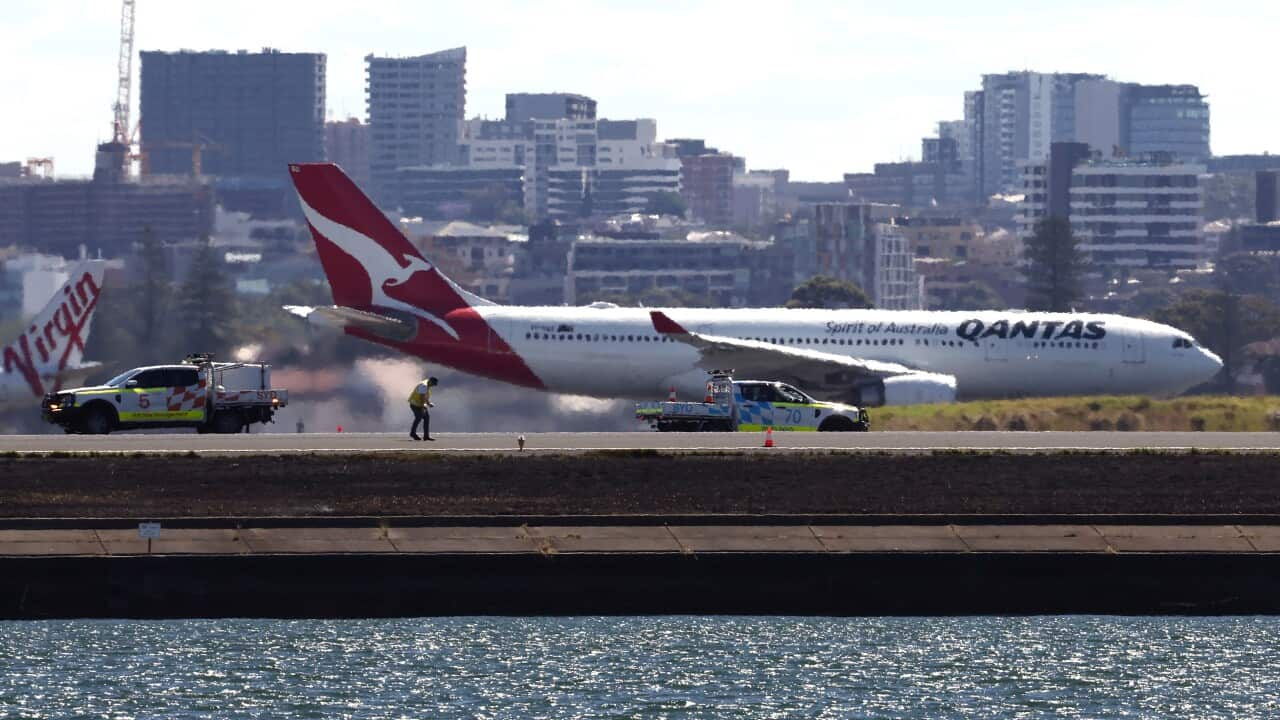It’s one reason engineers at Victoria University (VU) have spent the past year developing new uses for discarded items.

Melbourne researchers have discovered a method to reuse coffee cups and hi vis waste to create concrete. Source: SBS / Scott Cardwell
Reflective safety vests repurposed into concrete
“That means many used vests end up in landfills. So, we wanted to find an effective solution, and one solution was a cement replacement material in concrete.”
“Also, durable textile fibres enhance the fire properties within the concrete panel.”

Australians discard 11,000 tonnes of textile waste each year, including high-visibility vests and uniforms, according to Sustainability Victoria. Source: SBS / Scott Cardwell
Concrete is the second most consumed substance in the world after water, making the search for sustainable alternatives crucial.
“Producing cement is a bit like making cars; it generates a huge amount of carbon emissions — in fact, around 8 per cent of the total global carbon production,” Sandanayake said.

The new concrete has been used to construct a 20m path through the grounds of the Mahamevnawa Buddhist Meditation Monastery in Melbourne. Source: SBS / Scott Cardwell
The new concrete has been used for a 20m path through the grounds of Mahamevnawa Buddhist Meditation Monastery of Melbourne, where Sandanayake is a disciple.
In fact, he couldn’t be more pleased with the result.

Monk Sasana Bodhi Thero from Mahamevnawa Buddhist Monastery in Melbourne says the monastery is proud to be involved in the trial. Source: SBS / Scott Cardwell
“It is pretty much like a normal concrete,” Thero said.
The concrete was also tested in a storage compound on a major construction site. Both trials delivered positive results.

Lead researcher Malindu Sandanayake says the new concrete showed superior durability and performed well in fire testing during trials. Source: SBS / Scott Cardwell
“The results showed that the target strength that we intended was achieved earlier than what we expected, which was really good,” Sandanayake said.
“So, we believe that the presence of these textile fibres enhances the fire properties within the concrete panel. So, this could be a good fireproof concrete material for future use.”
Turning spent coffee into concrete
RMIT researchers recently poured concrete made with coffee grounds to create a new footpath in Gisborne in the Macedon Ranges, about 54km north-west of Melbourne.

RMIT researchers recently poured concrete made with coffee grounds to create a new footpath in Gisborne in Victoria’s Macedon Ranges. Source: Supplied / Carelle Mulawa-Richards / RMIT University
In the lab, coffee grounds are converted into biochar to replace sand — another key ingredient in concrete — which is becoming increasingly scarce.
Roychand said results from a previous footpath trial showed a 30 per cent increase in the concrete strength. Researchers now hope to develop commercial applications.

Clean Up Australia chair Pip Kiernan says a lot of improvement is needed in reducing waste sent to landfills and in recovering and reusing non-food items. Source: Supplied / Clean Up Australia
Are there any benefits of reusing waste?
“So, there is a lot of improvement needed when it comes to sending less waste to landfills and recovering and reusing non-food items.”

Lead researcher Malindu Sandanayake says VU researchers have also used end-of-life concrete as a substitute for sand and gravel in the creation of new concrete. Source: SBS / Scott Cardwell
Sandanayake said scientists at VU have also used end-of-life concrete to replace sand and rock in the production of new concrete.
The team is working on ways to incorporate even higher proportions of waste into concrete. But Sandanayake said they need vast amounts of reflective safety vests to achieve commercial production.














